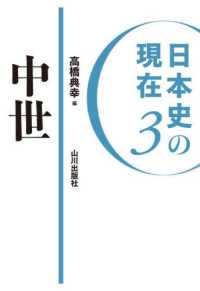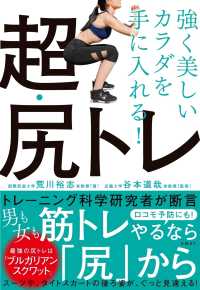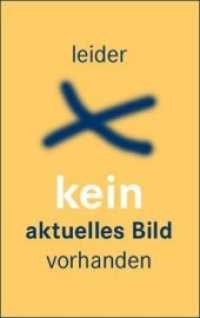- ホーム
- > 洋書
- > ドイツ書
- > Social Sciences, Jurisprudence & Economy
- > Media & Communication
- > book publishing, book trade, librarianship
Description
(Text)
Straub/Huillet's work challenges received notions of film. This study takes a feature which is common to all of their films as its starting point for analysing this challenge: all are based on existing works of art. The author investigates how Kafka's writing, music by Schoenberg and Bach and Cézanne's painting engender alternative modes of filmic representation. In these, the shape of time and space and the material features of sounds and images engage the audience's attention; they sensitise the viewer to the material inscriptions of human existence and an utopian potential. It is in this sense that these films are deeply political. By focusing on formal and stylistic features, and the interplay between the films and the works of art which they are based on, this volume responds to the films' invitation to see and hear differently.
(Table of content)
Contents: «Three Obligatory Parts, Well and Accurately Used» - Cinematic Polyphony in The Chronicle of Anna Magdalena Bach - «Barbarism Becomes Visible» - Montage and Documentation in Introduction to Arnold Schoenberg's Accompaniment to a Cinematographic Scene - «But You Have Eyes and Ears in Your Head, Haven't You?» - Staging the Language of Kafka in Klassenverhältnisse - «The Conscientious Observation of Things» - Reframing Cézanne.
(Author portrait)
The Author: Ursula Böser was born in Mannheim. She lectures in the Department of Languages and Intercultural Studies at Heriot Watt University in Edinburgh.








